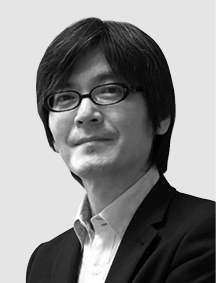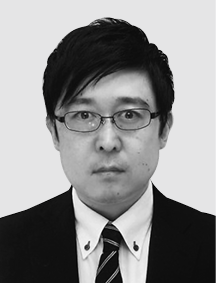Development of Platform for Sustainability Transformation
Highlight
Carbon neutrality has already been incorporated into the economy and management, but economic activities are now being called upon to go beyond just decarbonization and to implement efficient water resource use and resource circulation. The transition to this type of sustainable society cannot be achieved by a single company, but requires the cooperation and collaboration of stakeholders across industries, including technology, operation, certification, and financial support. This is what led the Hitachi Group to devise and begin the implementation of a platform that connects these stakeholders based on trust. This platform consists of three layers: a vision layer for ecosystem and rule formation, a digital layer for information and value distribution, and a physical layer for solutions in the real world. This article describes the details of the concept and, in particular, the theory and implementation of applications in the digital layer.

Introduction
Decarbonization efforts have already been incorporated into the economy and management, with the Japanese government declaring a goal of reaching carbon neutrality by 2050(1). Furthermore, there is a rapidly accelerating movement, particularly in Europe, to require economic activities to make the transformation to a sustainable society (sustainability transformation, SX), including efficient water resource use, biodiversity, resource circulation, and human rights issues. To comprehensively capture the impact of economic activities from multiple perspectives, Hitachi has developed a method for quantifying economic, social, and environmental value. This is a tool that can be applied to the evaluation and decision-making of economic activities and policies at the project, company, organization, regional, and national levels, and it uses a single numerical value to compare not only decarbonization, but also various other values.
However, SX cannot be achieved only by indexing individual economic activities. A value network must be built that enables multiple stakeholders to cooperate and implement reforms in economic activities based on indices. In other words, a platform must be established for the optimal flow of products, information, and funds through the interconnection of economic activities that contribute to SX.
When doing so, the distribution of trust in terms of whether or not the product and services contribute to SX becomes important. At the 2019 World Economic Forum Annual Meeting in Davos, former Prime Minister Abe proposed that data free flow with trust (DFFT) is the most important issue for new economic activities. In response to this, a trust governance framework was proposed in the white paper that was published on building trust(2). The ideas described in this article are based on this trust governance framework.
Platform for Sustainability Transformation
Targets and Structure
Figure 1 — Target Stakeholders and Three-layer Structure (a) Information on solution providers, operating companies, and financial institutions, which are the target of this concept, is securely communicated to the certification body, which will certify their contribution to SX. (b) This concept consists of three layers: vision, digital, and physical.
(a) Information on solution providers, operating companies, and financial institutions, which are the target of this concept, is securely communicated to the certification body, which will certify their contribution to SX. (b) This concept consists of three layers: vision, digital, and physical.
Consumers, national governments, local governments, media, and non-governmental organizations/non-profit organizations (NGOs/NPOs) are also important stakeholders in achieving SX, but first, Hitachi will focus on the four stakeholders that are indispensable for SX [see Figure 1 (a)]. Solution providers offer products and solutions, and operating companies execute their operations using these products and solutions. The stakeholders who evaluate and certify the SX contribution of these products, solutions, and business operations are certification bodies, and based on these certifications, financial institutions provide funds to appropriate businesses.
For solution providers, a certification that their products and solutions contribute to SX will have the advantage of increasing the value of their products and appealing to SX-oriented customers and operating companies. For operating companies, it allows them to appeal to consumers and other end customers and to obtain SX-specific financing. Also, certification bodies can expand the scope of certification and automate part of the certification process. Financial institutions will benefit from the availability of loans that are in line with stewardship codes and other regulations. This initiative is thus an infrastructure for distributing trust information, such as contributions to SX, as well as a marketplace where the four stakeholders can conduct business transactions.
This concept consists of three layers of activities [see Figure 1 (b)]. The physical layer consists of real-world solutions and business operations, including hardware such as equipment, for which various specific use cases are being implemented. The digital layer consists of three more layers. The cyber-physical layer captures the real world in the information space through sensors and other devices, the value layer converts digital data into value, and the trust layer ensures the transparency and confidentiality of data. The vision layer is a place for building a community of people who share the same values, specifically an ecosystem of consortiums, standardization, rule formation, and legal regulations. To realize SX, it is not enough to have IT, operational technology (OT), and products in the physical and digital layers. Governance from the vision layer is important. This concept is a service for enabling trust that is secured by certification, in other words, certification as a service.
Framework for Trust
Even if each stakeholder contributes to SX through economic activities, especially if they are directly related to profits, it is still possible that their actions may be regarded as greenwashing* on social media and may cause a firestorm of criticism. This is a trust issue, and it is necessary to correctly communicate and disseminate the fact that they are contributing to SX.
This concept uses the trust governance framework proposed in a white paper jointly issued by the World Economic Forum, the Ministry of Economy, Trade and Industry, and Hitachi, Ltd.(2). Trust is subjective and is based on objective facts (trustworthiness) [see Figure 2(a)], and governance allows these facts to accumulate.
The trust structure of each stakeholder is shown in Figure 2 (b), (c), and (d) to illustrate how this is applied to this concept. In order for people to trust that a company is contributing to SX (top row of Figure 2), facts must be accumulated (middle row of Figure 2). Here, visualization is an important function to communicate the accumulated facts to other stakeholders. Furthermore, the objectivity and credibility of the facts are ensured through data verification and on-site and physical inspections by certification bodies (bottom row of Figure 2).
- *
- The process of giving the appearance of being environmentally friendly, when in fact the company is not, and thereby misleading environmentally conscious consumers.
Figure 2 — Trust Governance Framework This shows (a) trust governance framework from the World Economic Forum (WEF) White Paper(2) and trust structure examples of its application to this concept: (b) solution providers, (c) operating companies, and (d) financial institutions.
This shows (a) trust governance framework from the World Economic Forum (WEF) White Paper(2) and trust structure examples of its application to this concept: (b) solution providers, (c) operating companies, and (d) financial institutions.
SX Certification Applications for Economic Activities
Application Overview
This section describes the applications developed based on the concepts described in the previous section. As shown in the top portion of Figure 3, applications (1) through (8) were developed for four stakeholders. Application (3) is a marketplace that connects solution providers and operating companies, and the other seven applications are for distributing trust.
First, a solution provider enters information on its products and solutions, effectiveness indices, and other information related to their contribution to SX, and submit an application to the certification body [(1)]. In response, the certification body recalculates the indices and conducts on-site and physical inspections based on the information provided by the solution provider and examines whether each item contributes to SX [(2)]. An operating company searches for information on certified products and solutions and adopts them [(3)]. After adopting the product or solution, the operating company enters information on the contribution to SX, and applies for both, certification of the contribution to SX for the entire business, and for financing [(4)]. Based on the information provided by the operating company, the certification body recalculates the indices, conducts on-site and physical inspections, and examines the contribution of each item to SX [(5)]. Also, the financial institution examines the business plan of the operating company and determines the most appropriate financial product and whether or not to provide financing by referring to the results of the examination by the certification body [(6)]. At this stage, the financial institution also applies for certification of the financial product that it offers [(7)], and the certification body examines and certifies it [(8)]. For each application, a digital product passport (DPP) is issued to certify that the solution or product contributes to SX. Standardization of DPPs is currently being promoted by the International Organization for Standardization (ISO, ISO 59040), the International Electrotechnical Commission (IEC, IEC 82474), and the International Telecommunication Union-Telecommunication Standardization Sector (ITU-T).
Figure 3 — Applications of the Concept The following are examples of applications (top row) and screen displays (bottom row) on the digital layer of this concept. From left to right, the screen display examples are: application for certification [(1), (4), (6), (7)], examination for certification [(2), (5), (8)], and solution search [(3)].
The following are examples of applications (top row) and screen displays (bottom row) on the digital layer of this concept. From left to right, the screen display examples are: application for certification [(1), (4), (6), (7)], examination for certification [(2), (5), (8)], and solution search [(3)].
Visualization of Resource Circularity
Figure 4 — Visualization Example of Resource Recycling These show a (a) Sankey diagram indicating the flow of resources procured and shipped by an operating company by resource type, and (b) an example of visualization of the flow of resources for the entire supply chain.
These show a (a) Sankey diagram indicating the flow of resources procured and shipped by an operating company by resource type, and (b) an example of visualization of the flow of resources for the entire supply chain.
In addition, two representation methods were implemented to visualize resource circularity. One is the Sankey diagram, which shows the flow of resources procured and shipped by an operating company, broken down by resource. This diagram shows what kind of resources an operating company procures and ships and is used by certification bodies and financial institutions for examinations. In the example in Figure 4 (a), the left side is the input (procurement) resources, the upper half is the circular inflow of reused resources, and the lower half is the linear inflow, such as virgin material. The right side shows the resources to be output (shipped), with the upper half showing the circular outflow of reusable resources, and the lower half showing the linear outflow of non-reusable resources such as landfill or incineration.
The above is the input/output flow of a single operating company, but a new visualization method showing the flow of the entire supply chain (value network) is shown in Figure 4 (b). The circular ring and the flow inside the circle are the circular in-flow and circular out-flow for each resource, and the flows entering and leaving the circle from outside the circle are the linear in-flow and linear out-flow, respectively. This allows certification bodies and financial institutions to examine not only individual operating companies, but also the resource circulation of the entire supply chain.
Conclusions
To investigate the acceptability of this concept, interviews were conducted with stakeholders from about 30 companies. As a result, while solution providers and operating companies have high expectations for the marketplace to provide and adopt sustainable solutions, solution providers have shown a sense of caution about leaking technical information about their products and services to competitors. Therefore, it is important to implement security technologies, such as blockchain, to prevent information leakage to parties other than certification bodies that examine and certify sustainability. Also, there was a high expectation that solution providers’ products and services and businesses operated by the operating company can be objectively certified as sustainable by a third party. The certification bodies came to understand that the function of ensuring data trust for issuing certifications is effective. Financial institutions have conducted sustainability audits from various perspectives in the past, but they have been extremely time-consuming and labor intensive, and there are high expectations for a reduction in labor and an increase in the number of financing sources.
Going forward, Hitachi will implement the three layers, vision, digital, and physical, in various industries, including the efficient use of water resources, in order to achieve the objective of this activity, which is to realize a platform that establishes a mechanism to convert sustainable proof into value and distribute it in order to realize a circular economy and society for the next generation, and enables the providing of sustainable products and services through collaboration among various stakeholders.
REFERENCES
- 1)
- Agency for Natural Resources and Energy, Ministry of Economy, Trade and Industry, “FY2021 Annual Report on Energy: Japan’s Energy White Paper 2021 (Summary)” (PDF Format, 1.01MByte)
- 2)
- World Economic Forum, “Rebuilding Trust and Governance: Towards Data Free Flow with Trust (DFFT)” (PDF Format, 2.3MByte)
- 3)
- International Organization for Standardization (ISO), “ISO/TC 323/WG 5—Product Circularity Data Sheet”







